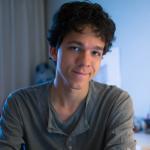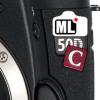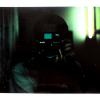Leaderboard
Popular Content
Showing content with the highest reputation on 04/15/2013 in all areas
-
Eagerly awaiting your Pocket Cinema Camera? You already have a micro for thirds camera and some C-mount lenses? Want to know if they will cover the sensor of the Pocket? Lets find out! I hope you will add your results, so we can make this list growing. I will only add lenses to the lists when you have proof, in other words: images. How? Because we know the active sensor area of the BMPCC measures 12,48 x 7,02 mm, it is fairly easy to check if our C-mount lenses will cover the full sensor. Calculate this by taking a picture with a lens on your micro four thirds camera, and crop out the image area of theBMPCC. In Photoshop: Open the image. Go to Edit > Image Size, uncheck resample image. Change Image width to 19 centimeters, press ok Go to Image > Canvas Size, change dimensions to 12,48 x 7,02cm, press OK to crop the image to BMPCC size. Resize to 1920x1080 pixels Post your results! Note: If you shoot on the GH3 or other MFT camera's, the sensor size is 17 x 13mm, so change the width in step 3 to 17 cm! To lazy to do it yourself or you can't work it out? Upload the full resolution files and I'll do it. List terms explained: Yes = covers the full sensor of the Blackmagic Pocket Cinema Camera No = doesn't cover the sensor Needs modification = Doesn't fit on C-mount to M43-adapter without modifications Equivalent = The focal length and depth equivalent on a fullframe camera (5D Mark III for example) Blackmagic Pocket Cinema Camera Compatibility list Primes Apollo 25mm f/0.85 - Yes = 72mm f/2.4 equivalent [link to proof] Angenieux 10mm f/1.8 Retrofocus (Fixed Focus) - Yes (dark corners) = 28,8mm f/5.2 equivalent [link to proof] [more info] Carl Zeiss Jena Tevidon 10mm f/2 - Yes - Needs modification = 28,8mm f/5.8 equivalent [link to proof] [more info] Carl Zeiss Jena Tevidon 35mm f/1.9 - Yes - Needs modification = 101mm f/5.6 equivalent [link to proof] Century 9mm f/1.8 - YES (poor quality) [link to proof] Computar 8mm f/1.3 - NO [link to proof] Computar 16mm f/1.4 - NO [link to proof] Computar TV Lens 25mm f/1.8 - YES = 72mm f/5,2 equivalent [link to proof] Cosmicar 8,5mm f/1.5 - NO [link to proof] Cosmicar 12.5mm f/1.8 - YES - Needs modification = 36mm f/5.2 equivalent [link to proof] Cosmicar 25mm f/1.8 - YES - 72mm f/5.2 equivalent [link to proof] Ernitec 6.5mm f/1.8 - YES (heavy distortion) [link to proof] Ernitec/Navitar 17mm f/0.95 - YES (v. blurry corners & distortion) [link to proof] Fujinon TV 12.5mm f/1.4 - Yes (blurry corners) - Mod.? (unknown) = 36mm f/4 equivalent [link to proof] Fujinon TV 16mm f/1.4 - NO [link to proof] Fujinon TV 35mm f/1.7 - YES - Needs modification = 101mm f/4.9 equivalent [link to proof] Leitz Macro Cinegon 10mm f/1.8 - Yes (dark corners) = 28,8mm f/5.2 equivalent [link to proof] Kern Switar 10mm f/1.6 - Yes (slight vignette & blurry corners) [link to proof] Nikon Cine Nikkor 13mm f/1.8 - Yes = 37,5mm f/5.2 [link to proof] Nikon Cine Nikkor 25mm f/1.8 - Yes = 72mm f/5.2 equivalent [link to proof] Pentax 25mm f/1.4 - YES - 72mm f/4 equivalent [link to proof] Schneider 10mm f/1.8 (silver version) - No (almost) [link to proof] Schneider-Kreuznach Cinegon 11.5mm f/1.9 - No (almost) = 33mm f/5.6 equivalent [link to proof] Schneider-Kreuznach Cine-Xenon 16mm f/2 - Yes = 46mm f/5.8 equivalent [link to proof] [link to proof (2)] Schneider-Kreuznach Xenon 25mm f/0.95 - Yes = 72mm f/2.7 equivalent [link to proof] Schneider Xenoplan 17mm f/1.7 - Yes (blurry corners) - [link to proof] SLR Magic 11mm F1.4 - Yes - [link to proof] (added by EOSHD) Tokina TV Lens 8mm f/1.3 - NO [link to proof] Tokina TV Lens 16mm f/1.6 - NO [link to proof] Taylor-Hobson Cooke Kinic 25mm f/1.3 - Yes = 72mm f/3.7 equivalent [link to proof] Taylor-Hobson 25mm f/1.9 - Yes - 72mm f/5.6 equivalent [link to proof] Wesley 25mm f/1.4 - YES = 72mm f/4 equivalent [link to proof] Wollensak Cine Raptar 12.5mm f/1.5 - Yes = 36mm f/4.3 equivalent [link to proof] Wollensak Cine Raptar 25mm f/1.9 - Yes = 72mm f/5.6 equivalent [link to proof] $ 25 noname 25mm f/1.2 CCTV - YES = 72mm f/3.5 equivalent [link to proof] Zooms Ernitec 6-12mm f/1.4 - NO [link to proof] Kowa TV Zoom 12.5-75mm f/1.8 - NO [link to proof]1 point
-

Rehousing LA7200. Help needed!
Zmu reacted to Tito Ferradans for a topic
Hi everyone! I've recently started to work on this project that might interest other users in this forum. I'll need some help in the process. One of my main interests in this development is to keep the whole process "open-source" so anyone can reproduce the rehousing based on what we share in this topic, staying as far as possible from a monopoly with ultra-high prices! :D We must agree that the Panasonic LA7200 is an interesting lens, right? But, as all others, it has its quirks and downsides, mostly related to its body design. Plastic is just cheap and fragile. It's very easy to lose parts of it (tiny screws, mostly), not mentioning the deep thread that requires more step rings and the square-front which makes diopter use way more complex than should be. Also, its weakness for close focus or shallow apertures is very well known. What if all this could be solved in a big move? What I'm planning is a full rehousing of this lens, improving every aspect mentioned in the previous lines. - Round, full-metal body - Internal alignment mechanism based on three screws instead of one (like a clamp) - 67mm, exposed rear thread - 114mm front thread, with various step-downs that won't increase the distance from the front element (non-standard design) - Very easy to remove glass for cleaning - "Focus adjustable", based on a push-pull concept, for closer focus, or longer rack focusing. Sounds good? What else do you guys think could/must be improved? I already have multiple sketches around these ideas but haven't started precise modelling yet, nor have contact with any CNC owners that might be interested in the project. If anyone wants to partner, please, speak up! My direct email is ferradans at gmail.com ps - the focus part is mostly based on this video, but with a body around it! hahaha https://vimeo.com/230421511 point -

The full Panasonic GH3 review
Andrew Reid reacted to Jean-Marc Abela for a topic
Thank you for such a thorough review Andrew.. i've been waiting for your analysis before i commit to purchasing my next camera this helps a lot!1 point -
Get a Cokin P series set with ND2, ND4 AND ND8 these are the best and do not degrade the image in any way make sure you buy original Cokin as there are alot of cheap copies on ebay I spent lot of time trying every ND made and for the money Cokin are best I dont like Vari NDs at all as they do degrade the image and can add odd artifacts if you get light from side angles you can get rainbow areas of color ! B+W is also a very good make (its made by Schneider in Germany) they are expensive1 point
-
Blackmagic Pocket Cinema Camera c-mount lens compatibility list
Julian reacted to Mirrorkisser for a topic
1 point -

Confused about Frame Rate rules versus Light rules
NikolaOvcharski reacted to powderbanks for a topic
Frame rate has no relation to exposure or light. Frame rate is how many individual pictures are being exposed/projected per second. Shutter speed is how long the shutter stays open, in seconds. The only thing you need to know about shutter angle is that it effects motion blur between frames. B: The light 'trio' of aperture, shutter speed and ISO is really for digital stills. For video, only consider ISO and aperture for controlling your exposure. Since DSLR's don't have a global shutter and you can't control the shutter angle, the only way you can control that is by your shutter speed (hence the 'inverse of twice the frame rate'). White balance really doesn't have anything to do with exposure. To a degree it does, but it is the temperature of the color white. Higher numbers give you a warmer (yellow/orange) white, lower numbers cooler (blue) white. 2. It depends on the situation, but I usually set the aperture first then use the lowest ISO I can and still retain proper exposure. I shoot at 1/40 shutter speed, you get a little bit more motion blur, but it's barely noticeable compared to 1/50 (for 24fps. I shoot 1/125 for 60fps). Don't even think of shutter speed in terms of a way to adjust your exposure. Leave it at whatever it is for the given frame rate (1/40 or 1/50 for 24/25fps or 1/100 or 1/125 for 50/60fps) and don't change it; unless you intentionally want to manipulate the motion blur. See below. 3. If you make your shutter speed faster, you'll lose more motion blur between frames, and motion starts to look artificial/strange. But if that's what you're going for, do it. If you slow it down (the GH2 can only go down to 1/30, I think, in 24fps) then you'll have the opposite. You can get down to 1/2 second shutter speed in Manual Movie Mode with the GH2, but IMO, it's only good for time lapse stuff. So really, there is no rule of thumb, aside from the 180 degree shutter concept for 'natural' motion blur. The challenge of shooting 1/40 or 1/50 shutter speed is that it is a rather slow shutter speed. In bright, outdoor situations, to retain shallow depth of field, you'll need to use an ND filter. You can get sets or a variable one.1 point -

Blackmagic Pocket Cinema Camera c-mount lens compatibility list
Mirrorkisser reacted to Julian for a topic
Andy Lee sent me some files, I cropped them and added them to the list. Thanks Andy! All shot fully wide open apeture on Panasonic GH2 with nostalgic profile. Computar 16mm f/1.4 Cosmicar 25mm f/1.8 Pentax 25mm f/1.4 Wesley 25mm f/1.4 Ernitec 6-12mm f/1.41 point -
Blanche have a read of this it explains the physics behind it http://en.wikipedia.org/wiki/Rotary_disc_shutter1 point
-
Shutter speed to shutter angles at 24 fps the math is (24 x 360) / Time Fraction (i.e. 8640 / xx where xx is 1/ xx sec ) So the equivalent shutter angle for 1/50 sec shutter speed is 8640 / 50 = 172.8 (i.e 172.8 degrees) Sec Equivalent Degrees 1/32 =270 1/48 =180 1/50 =172.8 1/60 =144 1/96 =90 1/120 =72 Ok try shoot 1/50 most of the time if you can that gives a cinematic look and reduced mains 50hz flicker on lights if your mains is 50hz like it is here in the UK if your subject is moving fast increase your shutter speed to 1/100 Saving Private Ryan was shot by cinematographer Janusz Kamiński at 45 degrees which is about 1/160 sec as he was shooting film stock he also used and out of phase shutter to get a jerky WW2 newsreel look at times. We can't do this on DSLR but we can use the higher shutter speeds to capture fast movement. - you get less motion blur that way. I have shot 2 pop videos in low light with fast lenses at 1/30 as it gave me more light as it was a dark set. so different setting work for different lighting styles .1 point
-
Today's new entries in my e-bay account are: http://cgi.ebay.co.uk/ws/eBayISAPI.dll?ViewItem&item=181122274020&ssPageName=ADME:B:SS:GB:1123 http://cgi.ebay.co.uk/ws/eBayISAPI.dll?ViewItem&item=200915759223&ssPageName=ADME:B:SS:GB:11231 point
-
Very tight budget. Sony Nex-5n is good for its price and can be had for far below $350. If it's possible to find a GH2 for that price I second Andy - get it.1 point
-
Izukar-scope by Ichizuka Optics. ( little 8mm fixed focus anamorphic )
brucker reacted to tony wilson for a topic
that is a great little lens.. unless it failed before that fungus should come off. many years ago i used diluted hydrogen peroxide with a cotton bud..then wiped then a little lighter fluid then cleaned up with the excellent calotherm and caloclear lens cleaner. only on glass mind. did someone attempt to clean it? on your ebay listing you should state that it should clean up nicely with a service. i really think that can be cleaned up better once serviced by someone good that thing will be great for the black magic pocket cam. very nice : )1 point -

[Closed] Current e-bay auctions for anamorphic adapters
Julian reacted to Tito Ferradans for a topic
http://www.ebay.com/itm/400458425725?ssPageName=STRK:MEWAX:IT&_trksid=p3984.m1423.l2649 http://www.ebay.com/itm/281090913997?ssPageName=STRK:MEWAX:IT&_trksid=p3984.m1423.l2649 Two more, Optex 1.33x, and quite cheap so far, close to end!1 point -
great idea for a thread! yes, thanks to this site 8 months ago i learned about anamorphic lenses and managed to get amazing looking stuff on a dinky lil nikon v1 camera with zero previous video experience. i actually entered a local competition with said dinky camera + anamorphic for a laugh and came in second place, much to my suprise... my 30 second bit is now being aired once a week for a year on local tv. i've now upgraded to a gh2 as i've actually been getting paying work, all due to the amazing people that contribute and who drop a crazy amount of knowledge on these forums, so yes, thank you guys very very much!1 point
-
5K resolution with at least 16 stops...
HurtinMinorKey reacted to FilmMan for a topic
Still around $20K. With Red, they could slash prices even further depending upon the market. With the BMC 4K on the horizon, it becomes an interesting poker game. 4K is plenty of fire power for the vast majority. 4K is a lot more demanding to work with due to the file sizes. How much resolution is enough? Having extra dynamic range is always welcomed. I find with the 1DC, it is plenty of firepower for my rookie purposes. However, there is always room for improvement. Cheers.1 point



